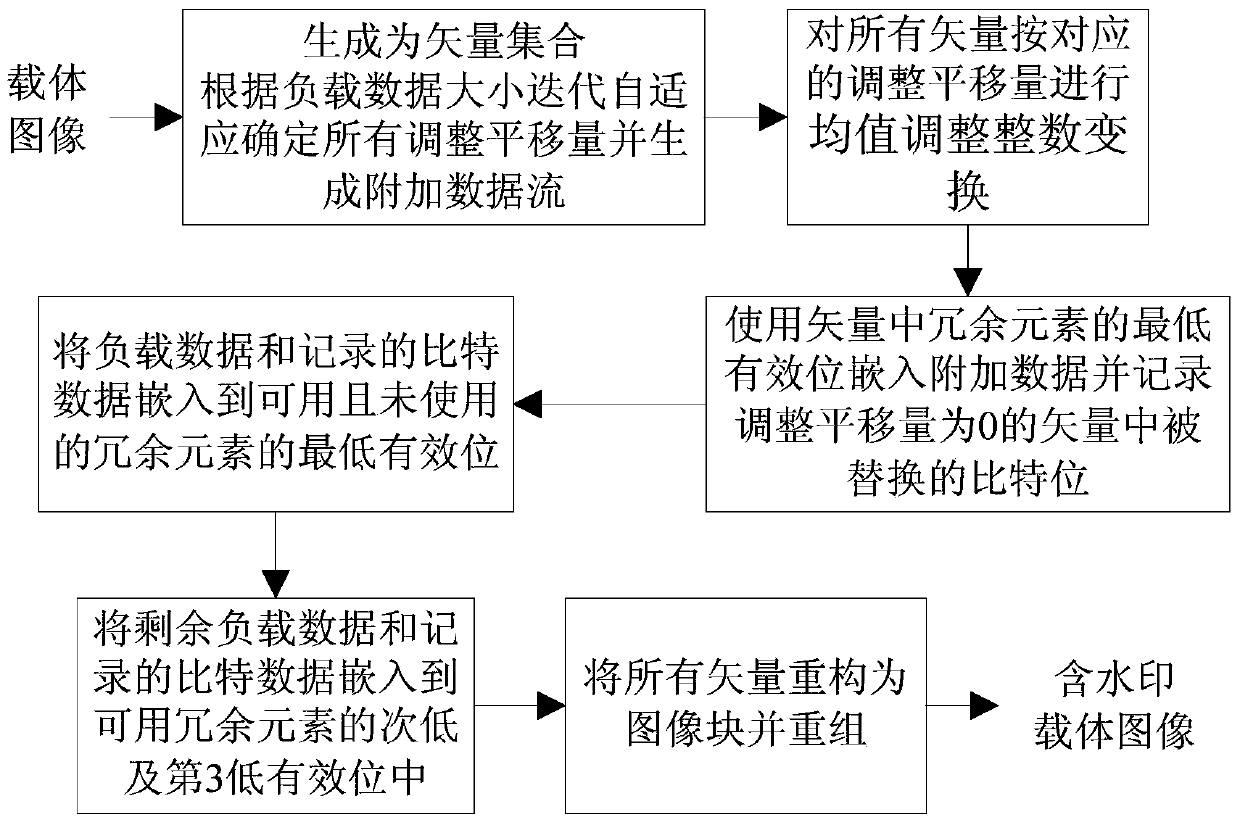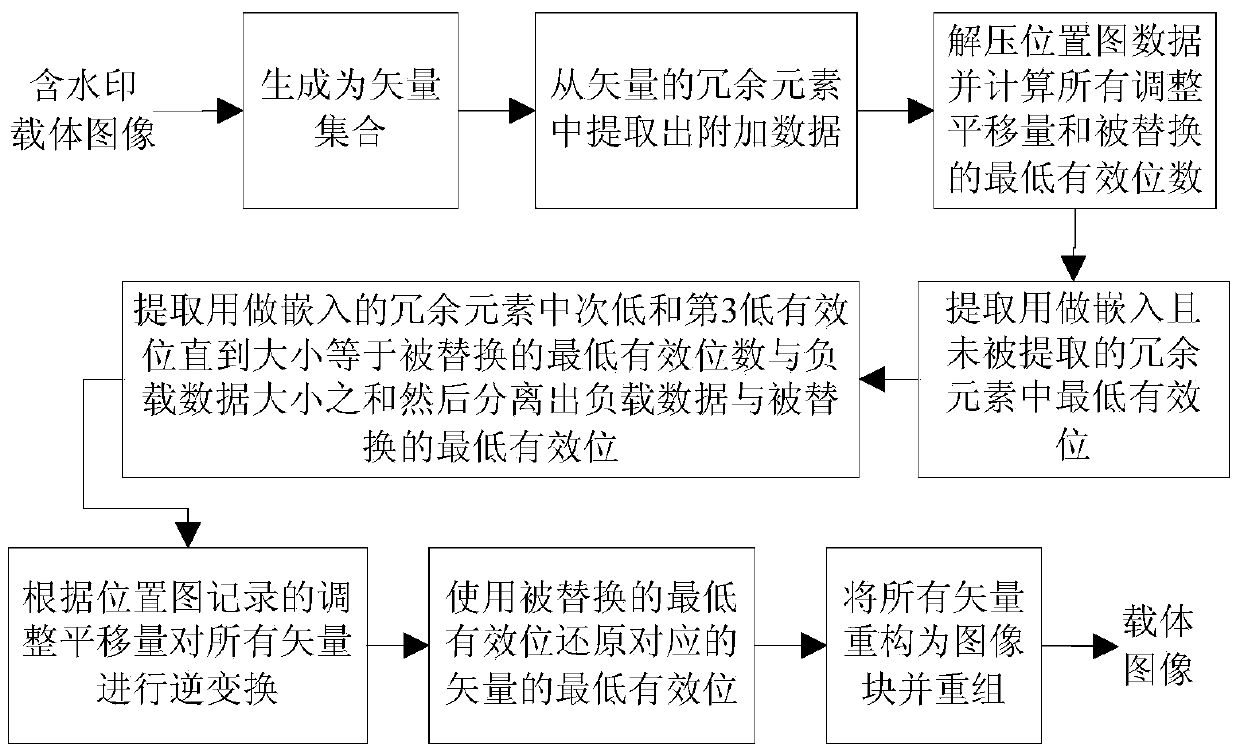An Iterative Adaptive Reversible Watermark Embedding and Extraction Method
An iterative adaptive, watermark embedding technology, applied in image data processing, instrumentation, image data processing, etc., can solve the problems of low visual quality, influence, and inability to embed all data, etc.
- Summary
- Abstract
- Description
- Claims
- Application Information
AI Technical Summary
Problems solved by technology
Method used
Image
Examples
Embodiment Construction
[0097] Principle of the present invention:
[0098] The embedding capacity of the existing reversible watermarking method and the visual quality of the carrier I′ after watermark embedding are closely related to the threshold T, but it is difficult to ensure that the embedding capacity and the visual quality of I′ are optimal at the same time when T is artificially selected. If T If the setting is too small, all the data cannot be embedded, and if it is too large, the visual quality of I′ will be low. At the same time τ=JBIG(L 0 ||L 1 ||L 2 ) is the compressed position map data, there is no necessary connection between T and len(τ), and the increase of T does not mean that the embedding capacity increases, so in the case of known β, it cannot be determined by the 2-point method T, and T itself is not necessarily an integer, so trying to T∈[0,49max(Var(s i ))] It is obviously unrealistic to perform violent enumeration in the interval. The essence of T is to determine all a...
PUM
 Login to View More
Login to View More Abstract
Description
Claims
Application Information
 Login to View More
Login to View More - R&D
- Intellectual Property
- Life Sciences
- Materials
- Tech Scout
- Unparalleled Data Quality
- Higher Quality Content
- 60% Fewer Hallucinations
Browse by: Latest US Patents, China's latest patents, Technical Efficacy Thesaurus, Application Domain, Technology Topic, Popular Technical Reports.
© 2025 PatSnap. All rights reserved.Legal|Privacy policy|Modern Slavery Act Transparency Statement|Sitemap|About US| Contact US: help@patsnap.com



